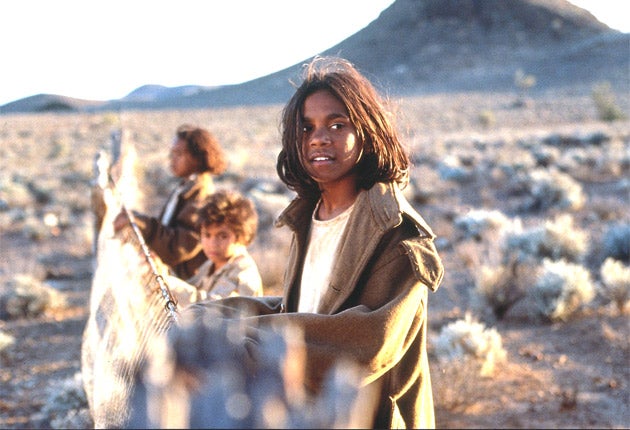Story of Aboriginal girls' flight that inspired film under revisionist attack
Historian says Australia's 'Stolen Generations' were held for their welfare

Your support helps us to tell the story
From reproductive rights to climate change to Big Tech, The Independent is on the ground when the story is developing. Whether it's investigating the financials of Elon Musk's pro-Trump PAC or producing our latest documentary, 'The A Word', which shines a light on the American women fighting for reproductive rights, we know how important it is to parse out the facts from the messaging.
At such a critical moment in US history, we need reporters on the ground. Your donation allows us to keep sending journalists to speak to both sides of the story.
The Independent is trusted by Americans across the entire political spectrum. And unlike many other quality news outlets, we choose not to lock Americans out of our reporting and analysis with paywalls. We believe quality journalism should be available to everyone, paid for by those who can afford it.
Your support makes all the difference.Rabbit Proof Fence, an award-winning film based on the story of three Aboriginal girls who escaped from an institution and walked home 1,250 miles across the desert, highlighted the plight of Australia's "Stolen Generations". The film, released to international acclaim in 2002, helped fuel demands for a government apology for the policy of removing Aboriginal children from their families.
The apology was finally given last year, by Prime Minister Kevin Rudd. But now the film, which won a host of awards and was nominated for a Golden Globe, has found itself under attack. Keith Windschuttle, a revisionist historian and outspoken critic of the "black armband" view of Australian history, claims it is "grossly inaccurate" and purveys a "big lie".
In a new book, to be released next week, Mr Windschuttle rejects the widely-accepted view that the practice of taking mixed-race children from their families and integrating them into white society was aimed at "breeding out" their Aboriginality. On the contrary, he claims, it was motivated by child welfare considerations.
Rabbit Proof Fence relates the story of Molly Craig, 14, her eight-year-old sister, Daisy Kadibill, and their cousin, Gracie Fields, 10, who grew up on an Aboriginal mission in the remote Pilbara region of Western Australia. Taken away by the authorities in 1931, they escaped from an orphanage near Perth and walked home, following a fence built across the continent to protect farming land from rabbits.
While researching his book, the third in a series entitled The Fabrication of Aboriginal History, Mr Windschuttle uncovered a letter written in 1930 by a farmer's wife, Mrs Chellow, to Auber Octavius Neville, the government official responsible for Western Australia's Aborigines. In it, according to the historian, she informed him that Molly and Gracie were "running wild with the whites" – a euphemism for having sex with white workers on a nearby cattle station.
Mr Neville, who pursued the removal policy with particular zeal, is a notorious figure in Australian history. But according to Mr Windschuttle, the letter exposes "the big lie" of Rabbit Proof Fence.
He told The Australian newspaper: "Neville did not use child removal in order to breed out the race. Girls, 12 or 13, having sex with whites was a common thing and [Neville] was appalled. All Australians would react in the same way and say we've got to get those children out of there."
His remarks reignited the "culture wars" waged by proponents of two conflicting versions of Australian history: a dark story of colonial atrocities and an uplifting narrative featuring brave pioneers. The wars raged with particular ferocity during the 12 year rule of former Prime Minister, John Howard, an enthusiastic fan of Mr Windschuttle's work.
However, his latest claims were rejected yesterday by Rabbit Proof Fence's director, Philip Noyce. He told the Sydney Morning Herald that Mr Windschuttle was "extremely lazy or just plain dishonest" in his examination of the official archives.
The filmmakers produced a subsequent letter in which Mr Neville opposed the idea of Daisy being allowed to "mate" with her full-blooded tribal husband. They also noted that Mr Neville declared in a speech in 1933: "The blacks will have to go white. It is exemplified [by] quarter-castes and by the gradual absorption of the native Australian black race by the white."
Molly's daughter, Doris Pilkington Garimara, author of a book on which the film was based, accused Mr Windschuttle of "distorting history".
In previous books, Mr Windschuttle has claimed that the "white" Australia immigration policy was not racist, and that Tasmania's Aborigines were not victims of genocide.
Join our commenting forum
Join thought-provoking conversations, follow other Independent readers and see their replies
Comments